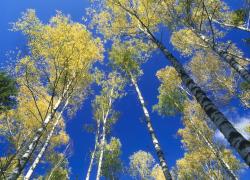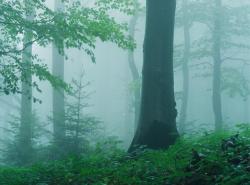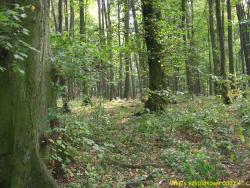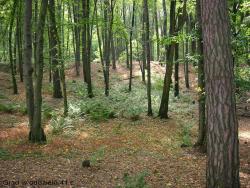 Wydawca treści
Wydawca treści
PGL Lasy Państwowe
Państwowe Gospodarstwo Leśne Lasy Państwowe to największa w Unii Europejskiej organizacja zarządzająca lasami należącymi do Skarbu Państwa, obchodząca w tym roku 90-lecie istnienia.
Obecnie gospodarujemy na niemal jednej trzeciej powierzchni Polski. Tuż po zakończeniu II wojny światowej było to zaledwie 21 proc. Co roku sadzimy 500 mln nowych drzew, by lasów w Polsce wciąż przybywało.
Co roku polscy leśnicy sadzą 500 mln drzew
Dbamy też, by lasy były różnorodne biologicznie. 85 proc. rezerwatów w Polsce leży na terenie Lasów Państwowych. 40 proc. lasów w naszym zarządzie jest chronionych w ramach europejskiej sieci Natura 2000. Walczymy z wieloma zagrożeniami: klęskami żywiołowymi, plagami owadów, chorobami drzew, pożarami, zanieczyszczeniami, a także kłusownictwem czy wandalizmem.
Jednym z naszych głównych zadań jest udostępnianie lasów społeczeństwu. Zachęcamy Was do skorzystania z pięknie położonych wśród leśnych ostępów ośrodków wypoczynkowych, leśniczówek czy pokoi gościnnych. To dla Was tworzymy tysiące kilometrów szlaków pieszych, rowerowych i konnych, setki parkingów leśnych i pól biwakowych. Wszystkie je znajdziecie w serwisie www.czaswlas.pl.
Dbamy również o to, by gospodarka leśna, dostarczająca na rynek drewno, surowiec uniwersalny i ekologiczny, prowadzona była zgodnie z zasadami zrównoważonego rozwoju. Pozyskujemy ponad 30 mln m sześc. drewna rocznie, dwa razy więcej niż na początku lat 90. XX wieku. Mimo to średnia zasobność w drewno hektara naszych lasów jest o jedną czwartą większa niż 20 lat temu i o 40 proc. większa niż obecnie wynosi średnia w Unii Europejskiej.
W Polsce w branżach związanych z leśnictwem pracuje ok. 375 tys. osób, czyli średnio co 40. pracujący Polak W Polsce w branżach związanych z leśnictwem pracuje ok. 375 tys. osób, czyli średnio co 40. pracujący Polak. Sektor przetwórstwa drewna wypracowuje ok. 8 proc. naszego PKB. Między innymi dzięki drewnu z Lasów Państwowych Polska jest 10. największym producentem mebli na świecie i 4. największym ich eksporterem.
Lasy Państwowe zatrudniają 25 tys. osób. W ten sposób jesteśmy 9. największym pracodawcą w Polsce. Wśród największych firm w kraju zajmujemy 22. miejsce pod względem przychodów i 11. pod względem zysków. Wartość majątku, którym zarządzamy, sięga 300 mld zł. Jeśli doliczymy wartości społeczne, będzie on wart biolion złotych. Nie korzystamy z pieniędzy z budżetu, tylko sami zarabiamy na swoją działalność. Pomimo kryzysu finansowego zysk odnotowujemy nieprzerwanie od 2002 r. Ponadto płacimy podatki wysokości 1,3 mld zł rocznie.
87 proc. Polaków uważa, że leśnicy są kompetentni. Chętnie dzielimy się z innymi swoją wiedzą o polskich lasach, ich historii i walorach przyrodniczych. Wydajemy książki, periodyki, broszury, prowadzimy stronę internetową www.lasy.gov.pl. Dla dzieci, młodzieży oraz nauczycieli przygotowaliśmy serwis „Las Rysia eRysia" (www.erys.pl). Nasza kadra od lat wspiera szkoły w edukacji przyrodniczej. Organizujemy też wiele akcji służących poszerzeniu wiedzy o lesie, przyrodzie i ekologii.
 Najnowsze aktualności
Najnowsze aktualności
 Polecane artykuły
Polecane artykuły
Położenie
Położenie
Nadleśnictwo Puławy jest jednym z 25 nadleśnictw wchodzących w skład Regionalnej Dyrekcji Lasów Państwowych w Lublinie. Nadleśnictwo jest położone na terenie województwa lubelskiego, powiatu puławskiego, ryckiego, lubelskiego i opolskiego. Swym zasięgiem obejmuje 19 gmin.
Nadleśnictwo Puławy jest jednym z 25 nadleśnictw wchodzących w skład Regionalnej Dyrekcji Lasów Państwowych w Lublinie. Nadleśnictwo jest położone na terenie województwa lubelskiego, powiatu puławskiego, ryckiego, lubelskiego i opolskiego. Swym zasięgiem obejmuje 19 gmin.
Obszar Nadleśnictwa Puławy według regionalizacji przyrodniczo-leśnej opartej na podstawach ekologiczno-fizjograficznych (Trampler) położony jest w:
Mezoregion Doliny Środkowej Wisły - Obejmuje dolinę Wisły o szerokości ok. 10 km, od okolic Puław pod Warszawę. Powierzchnia jego stanowi łąkowy taras zalewowy oraz wyższy taras piaszczysty pokryty wydmami. W mezoregionie dominują, więc krajobrazy den dolinnych i tarasów z wydmami.
Mezoregion - Wysoczyzna Siedlecka - Zajmuje wschodnią część nadleśnictwa, obejmując swym zasięgiem prawie cały obręb Ryki z wyjątkiem kompleksów położonych w dolinie Wisły oraz część obrębu Żyrzyn, położonego na wschód od linii Wronów-Bałtów-Parafianka. Obszar ten położony jest w zasięgu zlodowacenia środkowopolskiego. Jest mezoregionem o słabo zróżnicowanej rzeźbie. Powierzchnia jego obejmuje lekko falistą równinę, którą budują głównie piaski glacjofluwialne. W środkowej części mezoregionu wysoczyznę przecina pradolina Wieprza.
Mezoregion Równiny Radomsko-Kozienickiej - Stanowi część dzielnicy, położoną na południe i zachód od doliny Wisły oraz na południe od doliny Pilicy. Obejmuje on równinę denudacyjną zbudowaną głównie z piasków akumulacji lodowcowej z głazami i z glin zwałowych. W mezoregionie tym położona jest południowo-wschodnia część nadleśnictwa, na zachód od Wisły (ok. 15%).
Dzielnica Wyżyny Zachodniolubelskiej - Obejmuje południową część nadleśnictwa (ok. 2% powierzchni nadleśnictwa). Obejmuje ona obszar położony głównie miedzy doliną Wisły na zachodzie a doliną Wieprza na wschodzie, zbudowany ze skał kredowych (miękkie margle i twarda opoka) i pokryty warstwą lessu. Powierzchnię dzielnicy tworzą łagodne garby wznoszące się od ok. 180 m do 230 m n.p.m. W dzielnicy dominuje krajobraz wyżynny lessowy, miejscami o bardzo silnym rozcięciu erozyjnym — gęstej sieci suchych dolin i wąwozów. Ze względu na urodzajne gleby — rędziny i gleby brunatne — na terenie tym rozwinęło się przede wszystkim rolnictwo.


 fot. Paweł Fabijański
fot. Paweł Fabijański
 fot. Paweł Fabijański
fot. Paweł Fabijański
 fot. Paweł Fabijański
fot. Paweł Fabijański




 fot. H. Karczmarczyk
fot. H. Karczmarczyk
 fot. H. Karczmarczyk
fot. H. Karczmarczyk